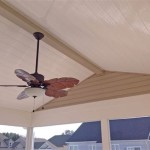How To Hang Acrylic Sheet From Ceiling or Wall
Acrylic sheets, also known as plexiglass, offer a versatile and aesthetically pleasing alternative to traditional glass. Their durability, clarity, and ease of fabrication make them a popular choice for a wide range of applications, from architectural features and signage to art installations and protective barriers. Successfully hanging acrylic sheets, whether from the ceiling or a wall, requires careful planning, appropriate materials, and precise execution. This article outlines the key considerations and methods for achieving a secure and visually appealing installation.
Understanding the Properties of Acrylic
Before embarking on the installation process, it is crucial to understand the fundamental properties of acrylic. Acrylic is a thermoplastic polymer, meaning it softens when heated and can be molded into various shapes. It is significantly lighter than glass, typically weighing about half as much for the same volume. This reduced weight can simplify installation, especially when dealing with larger sheets. However, acrylic is also more flexible than glass and susceptible to scratching. Therefore, proper handling is essential throughout the installation process.
Another critical factor to consider is acrylic's thermal expansion and contraction. Acrylic expands and contracts more than glass with temperature fluctuations. This movement must be accommodated in the mounting system to prevent stress fractures or warping. Mounting systems should allow for some degree of freedom for the acrylic to move independently of the supporting structure.
Planning and Preparation
Careful planning is paramount to a successful acrylic sheet installation. This phase involves assessing the site conditions, determining the appropriate mounting method, selecting the necessary materials, and preparing the acrylic sheet itself. A poorly planned installation can lead to structural instability, aesthetic imperfections, and potential damage to the acrylic.
The first step is to accurately measure the dimensions of the acrylic sheet and the available mounting space. This will ensure that the sheet fits properly and that the mounting hardware is positioned correctly. Consider any obstructions, such as pipes, electrical wiring, or existing fixtures, that may interfere with the installation. Create a detailed diagram or blueprint that outlines the placement of the acrylic sheet and the mounting points. This will serve as a visual guide throughout the installation process.
Next, determine the weight of the acrylic sheet. This is essential for selecting appropriate mounting hardware that can safely support the load. Acrylic sheets typically weigh around 1.18 grams per cubic centimeter (g/cm³). To calculate the weight, multiply the volume of the sheet (length x width x thickness) by its density. Add a safety factor of at least 2 to the calculated weight to account for potential overloads or stress concentrations.
Based on the weight of the acrylic sheet and the characteristics of the mounting surface (ceiling or wall), choose a suitable mounting method. Common methods include using standoffs, hanging wires, or framing systems. Each method has its own advantages and disadvantages in terms of aesthetics, ease of installation, and load-bearing capacity.
Select the necessary hardware, including screws, anchors, standoffs, wires, or frames. Ensure that the hardware is compatible with both the acrylic sheet and the mounting surface. Use stainless steel or other corrosion-resistant materials to prevent rust or degradation over time. Choose screws and anchors that are appropriately sized for the weight of the acrylic sheet and the type of mounting surface. Consult with a hardware professional if you are unsure about the appropriate size or type of hardware to use.
Before installation, carefully clean the acrylic sheet to remove any dust, dirt, or fingerprints. Use a soft, lint-free cloth and a mild acrylic cleaner. Avoid using abrasive cleaners or solvents, as these can scratch or damage the surface of the acrylic. It's recommended to leave the protective film on the acrylic sheet until the very end of the installation process to prevent scratches.
Mounting Methods and Techniques
The chosen mounting method will largely dictate the specific steps required for installation. However, several general principles apply regardless of the chosen method.
Using Standoffs
Standoffs are a popular choice for mounting acrylic sheets because they create a clean, modern look and allow for some degree of thermal expansion and contraction. Standoffs consist of two main components: a barrel that attaches to the mounting surface and a cap that secures the acrylic sheet.
To install acrylic using standoffs, first drill holes in the acrylic sheet at the desired mounting locations. Use a drill bit specifically designed for acrylic to prevent cracking or chipping. The holes should be slightly larger than the diameter of the standoff barrel to allow for thermal expansion. Ensure that the holes are accurately positioned to align with the mounting points on the wall or ceiling.
Next, attach the barrels of the standoffs to the wall or ceiling using appropriate screws and anchors. For drywall, use drywall anchors that can support the weight of the acrylic sheet. For concrete or masonry, use concrete screws or anchors. Ensure that the barrels are securely fastened to the mounting surface and that they are aligned properly.
Finally, carefully position the acrylic sheet onto the standoff barrels and secure it with the standoff caps. Tighten the caps gently to avoid over-tightening, which can crack or damage the acrylic. Leave a small gap between the cap and the acrylic sheet to allow for thermal expansion. Regularly inspect the standoffs to ensure they remain secure and that the acrylic sheet is not exhibiting any signs of stress.
Hanging with Wires or Cables
Hanging acrylic sheets with wires or cables is a common method for ceiling installations, especially for larger or heavier sheets. This method allows for flexible positioning and can create a visually striking effect.
Begin by attaching hanging hardware to the acrylic sheet. This typically involves drilling holes near the corners of the sheet and attaching eye bolts or cable clamps. Ensure that the hardware is securely fastened to the acrylic and that the holes are positioned to distribute the weight evenly.
Next, attach hanging hardware to the ceiling. This may involve drilling holes and installing hooks, eye bolts, or cable anchors. Choose hardware that is rated to support the weight of the acrylic sheet. Ensure that the ceiling hardware is securely fastened to the structural members of the ceiling, such as joists or beams.
Cut the wires or cables to the desired length, allowing for some slack to adjust the height of the acrylic sheet. Attach the wires or cables to the hanging hardware on both the acrylic sheet and the ceiling. Use cable clamps or wire crimps to secure the wires or cables. Ensure that the wires or cables are evenly tensioned to distribute the weight of the acrylic evenly.
Carefully raise the acrylic sheet into position and adjust the height of the wires or cables as needed. Use a level to ensure that the acrylic sheet is hanging straight. Regularly inspect the wires or cables to ensure they remain secure and that the acrylic sheet is not exhibiting any signs of stress.
Using Framing Systems
Framing systems offer a more robust and secure method for mounting acrylic sheets, especially for larger or irregular shapes. These systems typically consist of a metal frame that surrounds the acrylic sheet and provides structural support.
The first step is to assemble the frame according to the manufacturer's instructions. Ensure that the frame is properly aligned and that all the joints are securely fastened. The frame can be made of aluminum, steel, or other durable materials.
Next, carefully insert the acrylic sheet into the frame. Some frames may require the use of rubber gaskets or other cushioning materials to protect the acrylic from scratching or damage. Ensure that the acrylic sheet fits snugly within the frame and that there are no gaps or loose areas.
Finally, attach the frame to the wall or ceiling using appropriate mounting hardware. Depending on the weight of the framed acrylic sheet and the characteristics of the mounting surface, use screws, anchors, or other suitable fasteners. Ensure that the frame is securely fastened to the mounting surface and that it is level and plumb.
Framing systems provide a secure and stable mounting solution for acrylic sheets, especially in high-traffic areas or environments where the acrylic may be subjected to impacts or vibrations.
Safety Considerations
Safety should be the top priority throughout the acrylic sheet installation process. Always wear appropriate personal protective equipment (PPE), such as safety glasses, gloves, and a dust mask. Acrylic dust can be irritating to the eyes and respiratory system.
When drilling or cutting acrylic, use sharp tools and apply gentle pressure to prevent cracking or chipping. Avoid overheating the acrylic, as this can cause it to melt or warp. Use a vacuum cleaner to remove acrylic dust and shavings regularly.
When working at heights, use a stable ladder or scaffolding. Ensure that the ladder or scaffolding is properly positioned and secured. Never overreach or lean excessively while working at heights. Have a helper assist with lifting and positioning the acrylic sheet, especially for larger or heavier sheets.
Before drilling into walls or ceilings, check for hidden pipes or electrical wiring. Use a stud finder or other detection device to locate structural members and avoid drilling into areas where there may be utilities. If you are unsure about the location of utilities, consult with a qualified electrician or plumber.
After the installation is complete, inspect the mounting hardware regularly to ensure that it remains secure. Tighten any loose screws or replace any damaged hardware. Address any issues promptly to prevent the acrylic sheet from becoming unstable or falling. Follow all local building codes and regulations related to acrylic sheet installations.

Fastening And Laying Plexiglas

How To Install Ceiling Panels The Panel Company

Painting Prep How To Hang Plastic From The Ceiling

How To Hang Acrylic Prints Wall Art A Comprehensive Installation Guide Bruzzen

Fall Ceiling Design Pvc Panels Ideas And Acrylic Sheet

Acrylic Sheet Kaise Lgate Hai How To Apply On Wall

5 Ways To Hang Anything From The Ceiling

Mdf Sheet म Cnc क और Acrylic Light लग न तन खर च आत ह

Plastic Shield Hanging Kit T Bar Suspension Covid 19 Protective

How To Install A Pvc Ceiling Cladding Guide
Related Posts








